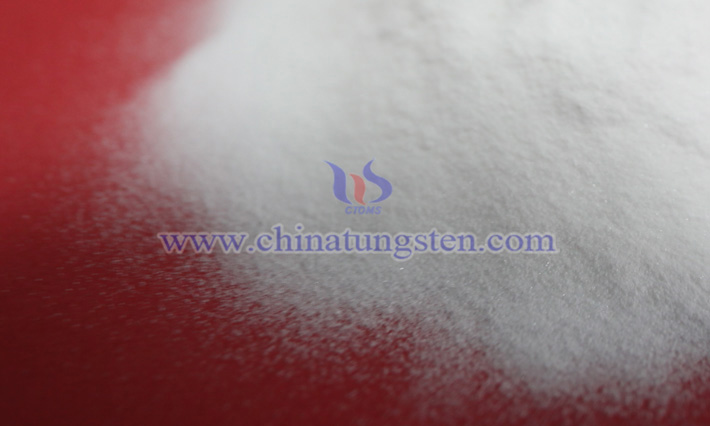Why Is Ammonium Metatungstate Powder White?
- Details
- Category: Tungsten Information
- Published on Thursday, 29 May 2025 14:02
Ammonium metatungstate powder (molecular formula H₂₈N₆O₄₁W₁₂, AMT), as a key intermediate in tungsten chemical industry, exhibits a white appearance resulting from the combined effects of its molecular structure, electronic transition characteristics, and crystal physical morphology.

The molecule of ammonium metatungstate consists of ammonium ions (NH₄⁺) and metatungstate anions ([W₁₂O₄₁]⁶⁻), with the core feature being a polytungstate cluster anion. This anion is formed by 12 tungsten atoms and 41 oxygen atoms linked through covalent and coordinate bonds into a complex polyhedral structure. Tungsten atoms exist in the +6 oxidation state, while oxygen atoms are classified into four types: terminal oxygen, bridging oxygen, central oxygen located inside the cluster, and protonated oxygen bound to two hydrogen atoms. This structure results in the following key characteristics:
Electronic energy level distribution: The d-orbitals of tungsten atoms strongly interact with the p-orbitals of oxygen atoms; however, the energy gap between the highest occupied molecular orbital (HOMO) and lowest unoccupied molecular orbital (LUMO) of the metatungstate ion is large, usually exceeding the visible light energy range.

Charge transfer absorption limitation: Due to the electronegativity difference between tungsten and oxygen, charge transfer transitions may occur, but the energy required for these transitions is far above the visible light spectrum, resulting in negligible absorption in visible light.
The crystal structure of ammonium metatungstate decisively influences its optical properties:
Monoclinic crystal symmetry: The crystal belongs to the P2₁/c space group; its layered structure causes multiple reflections of light between crystal planes, increasing the optical path and enhancing reflectance efficiency.
Particle morphology optimization: Spherical particles with smooth surfaces reduce light scattering losses.
Porosity control: Dense particles with low porosity minimize internal light absorption, further improving reflectivity.
Different preparation methods may affect the whiteness purity of ammonium metatungstate:
Ion exchange method advantages: High purity and bright whiteness but requires strict control of resin regeneration conditions to avoid metal ion contamination.
Thermal decomposition-acidification method: Ammonium paratungstate thermally decomposed at 200–280°C is then treated with dilute nitric acid to precisely adjust pH; if pH is too high, tungsten oxide precipitates may form, reducing whiteness.
- Chinatungsten Online: ammonium-metatungstate.com
- CTIA GROUP LTD: en.ctia.group
- Tungsten News & Price: www.ctia.com.cn
- Molybdenum News & Price: news.molybdenum.com.cn
- Tel.: 86 592 5129696; Email: sales@chinatungsten.com



 sales@chinatungsten.com
sales@chinatungsten.com